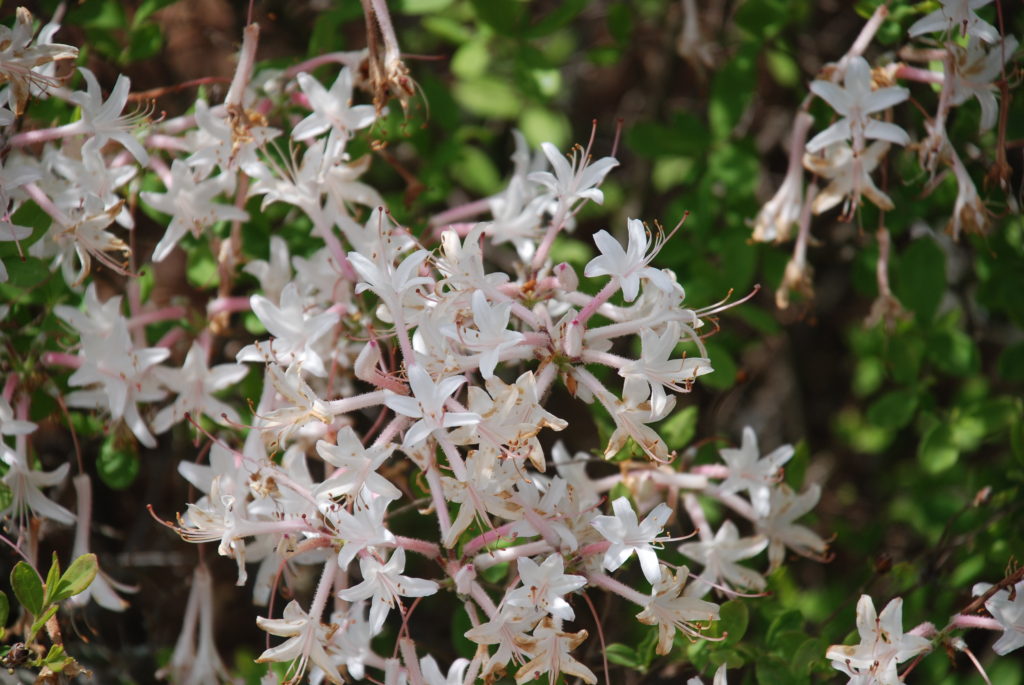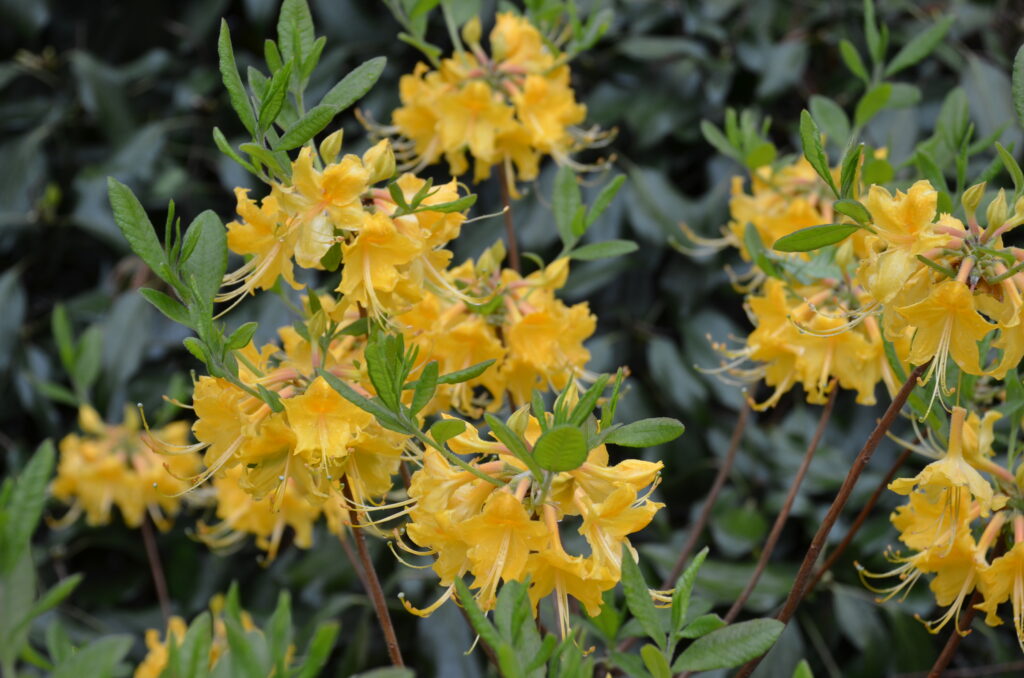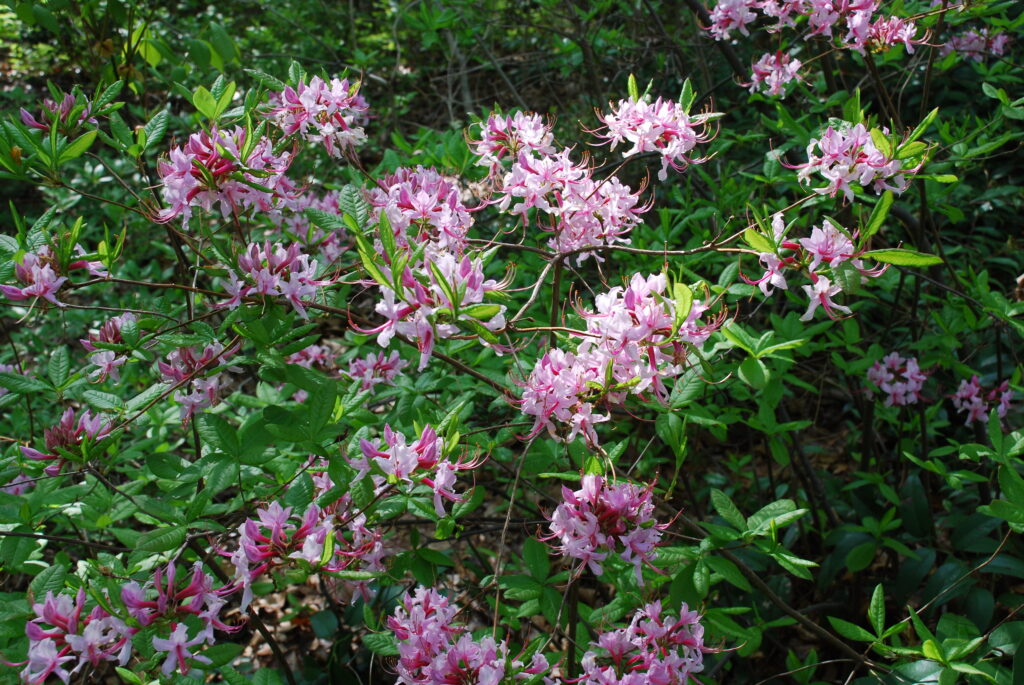About Native Azaleas: Flowers appear from April to September depending on species. Flower clusters (called “trusses”) appear just before the leaves emerge. Each truss may bear 3 – 12 blooms, which open 1.5 – 2 inches wide. Flower colors vary among native species from white, pink, orange and red shades. In many spring blooming species, the open petals curve back to show off the long stamens and styles that protrude from the flowers. Among the 15 azaleas native to the Eastern and Southern U.S., flower fragrance is wonderfully aromatic in some; others emit no fragrance.
Three of my early spring blooming favorites are highlighted here.

Coastal azalea (Rhododendron atlanticum) is a compact, loosely branched, stoloniferous, suckering, deciduous shrub that typically matures to 2-3 feet tall and as wide, but infrequently grows to 6 feet. In April 1.0-1.5-inches long white flowers are flushed with pink, bloom in multiple clusters of at the time of or slightly before the appearance of new leaves. Stamens protrude well beyond the corolla mouth. Flowers have a wonderful musky fragrance. This azalea is native to coastal plain areas from New Jersey and Pennsylvania south to Georgia. It spreads by underground stolons. (Zones 5-8).

Florida Flame Azalea (R. austrinum), not to be confused with Flame azaleas (R. calendulaceum) blooms within days after Coastal Azalea in shades ranging from sunny yellow to deep gold, tangerine, or apricot. Blooms strut showy protruding stamens and are highly fragrant. It is native to woodland slopes and mountain balds in the Appalachian Mountains from Pennsylvania to Georgia. (Zones 6-9). Shrubs are upright branched and typically grow 4 to 8 feet tall (infrequently to 10 to 15 feet) and 8 to 10 feet wide.

Pinxterbloom azalea (Rhododendron periclymenoides), formerly R. nudiflorum, is a hardy deciduous azalea native to a large geographic area of the eastern U.S. Pinxterbloom prefers a humus-rich, well-drained soil. Pinxterbloom grows to heights from 4-8 feet. The slightly fragrant flowers are generally pale pink but colors may range from white to deeper purple in natural populations. It spreads by underground stolons and shrub may become densely branched. (Zones 4-9).
General Care: A partly shaded or dappled sun site is preferred. Heavy woodland sites limit flower numbers. Deciduous azaleas prefer consistent moisture, and well-drained soil. Water after planting and every 5 days over dry periods lasting 10 or more days. Mulching with 3–4-inch layer of pine needles, wood bark, or compost helps conserves soil moisture and maintains cooler soil temperatures.
Deciduous azaleas are pruned within 4-6 weeks after seasonal flowering has finished. Prune to desired shrub size and remove broken or dead wood. Protect against strong winter winds and spring frosts to prevent leaf scorch and blossom injury. Disease and insect problems are infrequent when these 3 native azaleas are properly sited. Flowers will attract butterflies, bees, and hummingbirds.

 Posted in
Posted in 
